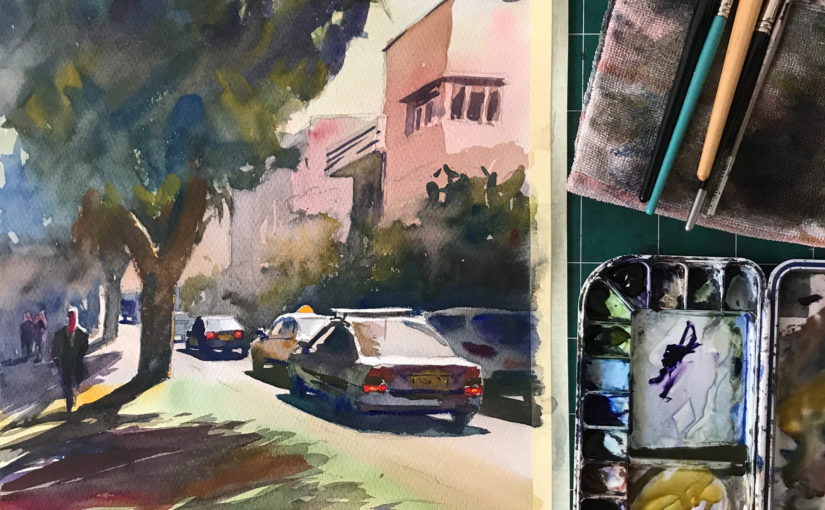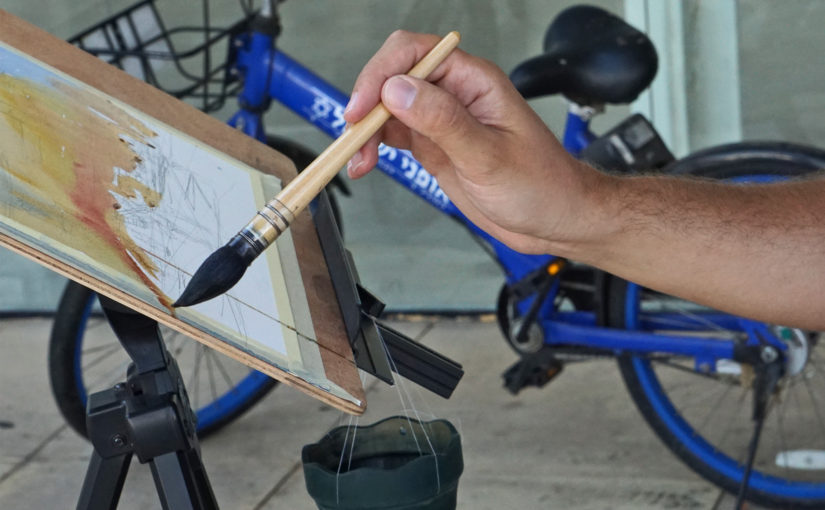Podcast: Play in new window | Download
In this episode I’m sharing with you three “hacks” I learned for continuously improving, FAST, in watercolor painting. This could probably also be applied to any other different drawing & painting medium.
Here’s a snippet of the hacks!
Hack #1 – Master Studies
This is one of the things that have really helped me expend my horizons and improve fast.
By doing paintings based on masters’ works, you “force” yourself to see things the way they do, and to create using a similar process to theirs!
This will help you improve, but also break your own patterns and make sure you never plateau.
Hack #2 – Plein-Air Painting
Plein-air, or in other words – painting on location – is one of the activities that constantly help me preserve my spontaneity and authenticity.
Painting inside all the time, and working from photos, can really limit the creation experience.
It can lead to you following the same familiar path you’ve been following for a long time.
In addition, it’s more detached from your painting subject. The photo has been taken for you. The process has been edited.
Painting outside cuts all interferences.
Many struggle with shyness or people looking at them. That goes away very fast. Also – help yourself by painting in more rural and less densely populated areas, if possible.
Hack #3 – Both Techniques AND Premium Finished Paintings
You want to allocate time to both these different activities.
One – you want to spend isolated time practicing the basics and techniques of watercolor, without worry of producing a specific final result.
Second – You want to spend time creating the BEST, largest, most detailed paintings you can (and want to), and not just small quick studies.
This will also depend on your goals and style of choice. If you like abstract art, simplified paintings or scenes – go for it! But if you aim for a higher level of detail and impressionism / realism – this will be beneficial.
Conclusion
I hope you find these helpful.
Remember these are simply my suggestions. Figure out what works best for you – and do that ^_^
Good luck!
— Liron
Want to Reach Out?
Got any questions? Want help with your paintings? Feel free to reach out to me in any of the platforms I’m on, and I’ll be happy to help (:
YouTube – Liron Yanconsky Art
LinkedIn – Liron Yanconsky
Pinterest – Liron Yanconsky
Instagram – @LironYanIL
Twitter – @LironYan


